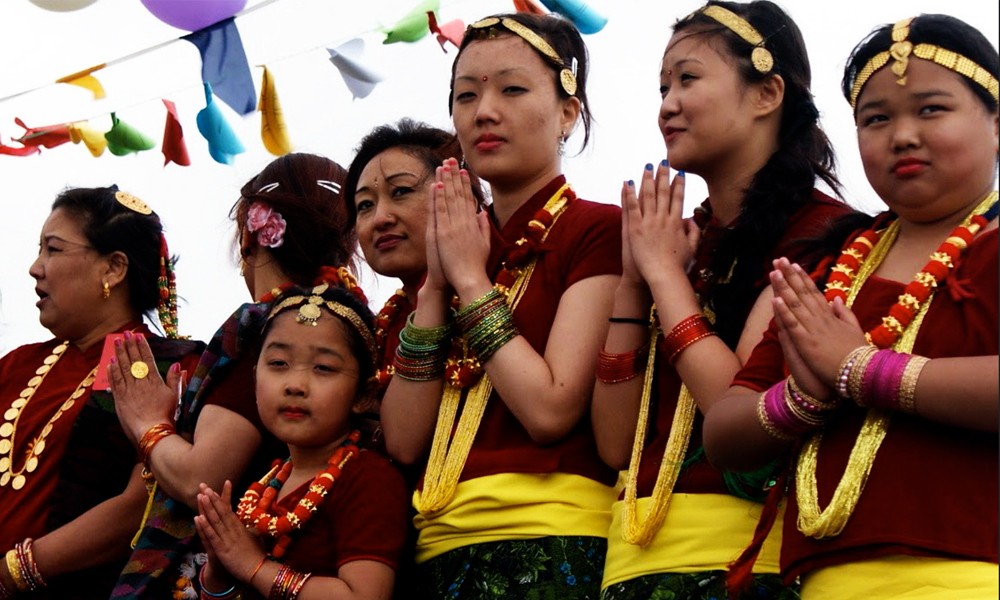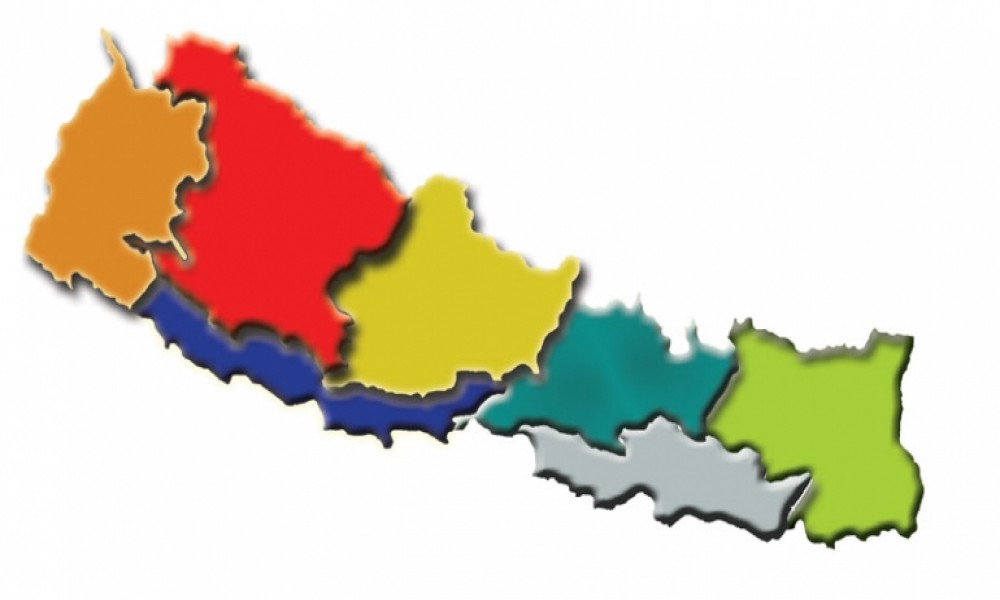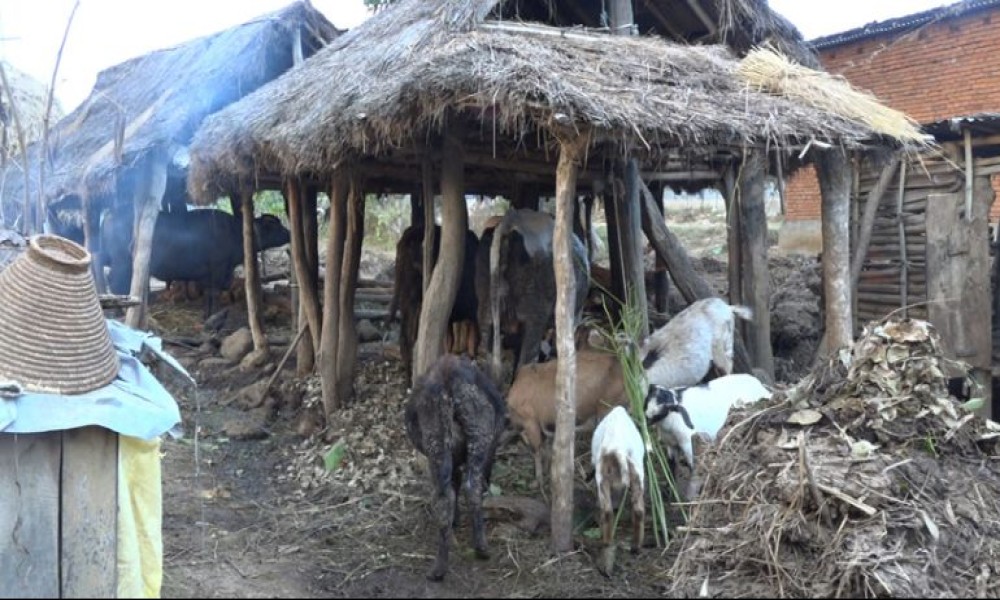by Heidi Bruce
January 8, 2015
The world of internationally recognized states may well be on its way out. With roughly 200 entities describing themselves as authentic states and more than 5000 nations existing in the world, the current configuration of the international community is already under significant stress. It’s getting to the point where we could see the collapse and disappearance of many states and the emergence of nations as internationally recognized entities in their own right. Fourth World theory may serve as the best way to understand the shifting political realities of the 21st century.
Fourth World theory has long asserted that a re-ordering of the geopolitical world—a “collapse” as some view it—is necessary to mitigate global conflict and escalating challenges such as climate change and food insecurity.
Yet, because of its criticisms of the international state system—a system with deeply entrenched state and corporate interests—Fourth World theory has been marginalized by academics, governments and the media, much to the detriment of humans and the planet.
A 2014 article in the New Scientist, however, shows inklings that there are in fact “others” out there beginning to wake up to the reality that the current amalgamation of geopolitical borders does not serve humans’ nor the earth’s long-term aspirations and needs.
In End of Nations: Is there an alternative to countries? Deborah MacKenzie begins her article with the following statement: “Nation-states cause some of our biggest problems, from civil war to climate inaction. Science [now] suggests there are better ways to run a planet”.
Not typically considered a “scientific” topic (much to political scientists' chagrin), the notion of geopolitical reorganizing is considered by many complexity theorists, social scientists and historians as a necessary means for addressing global challenges. MacKenzie writes of a growing feeling among economists, political scientists and national governments that the nation-state is not necessarily the best scale on which to run human affairs.
To a Fourth World theorist (yes, they exist), this article is a welcome surprise—yet long overdue.
Nations & States Clarified
Though complementary of much of Fourth World theory’s assertions, a few key terms in MacKenzie’s article need clarification.
The modern state is the principal political unit in the international political system, corresponding to a specific territory (Barrington, 1997). It is an arbitrary, legal creation that emerged as an outgrowth of European kingdoms, colonialism, and the division of large colonial empires into smaller neocolonial pieces. Conceived at the Treaty of Westphalia (1645), a state has five essential requirements: central authority, internally enforced universal law, police/military powers, defined boundaries, and is recognized by other states. These constitute a useful construction for organizing political and lethal power. (Ryser, 2014)
A nation, on the other hand, is a people sharing a common language, common territory, common culture, or common heritage. It is self-identifying dynamically evolved over time—responding to natural and induced changes. Nations evolve as a set of relationships between a people, the land and the cosmos (Ryser, 2014). What makes nations unique is that they are collectives united by shared cultural features (myths, values, etc.) and the belief in the right to territorial self-determination (Barrington, 1997).
A nation, on the other hand, is a people sharing a common language, common territory, common culture, or common heritage. It is self-identifying dynamically evolved over time—responding to natural and induced changes. Nations evolve as a set of relationships between a people, the land and the cosmos (Ryser, 2014). What makes nations unique is that they are collectives united by shared cultural features (myths, values, etc.) and the belief in the right to territorial self-determination (Barrington, 1997).
Despite popular usage of the term nation-state to define a political unit, there are, in fact, only a few true nation-states in the world. While some nations that have formed a state and can be referred to as a nation-state (Iceland, Vanuatu, Kiribati and Korea for example), no state has formed a nation—even though many (e.g. the US, Australia, Namibia, Lebanon) think they have. States may acquire their identity from nations (Russia from Russians, France from the Franks, México from the Méxica), but states do not define nations.
State-Centrism
Since its inception, the modern state system has been viewed (mostly by states) as the quintessential political unit to which all societies should aspire—with representative democracy and the rule of law as its prized characteristics.
Yet, as MacKenzie writes, the modern state is a recent phenomenon. In Europe, before the late 18th century, there were no real nation-states [states]. “Neither passports nor borders as we know them existed. People defined themselves vertically by who their rulers were and people and territories often came under different jurisdictions for different purposes.” Indeed, the modern state system that now comprises more than 200 entities did not really begin to form until the early twentieth century during and after the 1914 – 1918 Great War (The War to End All Wars). Empires of previous centuries began to crumble under their own weight, while the state identity was forged through expansion, industrialization and war.
MacKenzie writes, “In 1776 and 1789, revolutions in the US and France created the first states, defined by national [state] identity rather than bloodlines.” At the time, almost no one in France thought of themselves as French. But by 1900, allegiance had shifted from the Fourth World nation level, such as Brittany, to a state-constructed sense of being “French.”
Through colonization, similar patterns happened across the world—pre-existing Fourth World nations, unique in their cultural, linguistic and political attributes, were thwarted by this new state ideology and the military and economic forces that enforced it.
Kohr Revisited
In his seminal book, Breakdown of Nations (1957), the Austrian economist and political scientist Leopold Kohr (1909-1994) argued that Europe should be reconfigured into smaller political regions (cantons). He saw the model for such a new political configuration had existed in the past and that still persists in true democratic holdouts like Switzerland.
As state structures were built (literally and figuratively), the scale at which people were governed changed. Regarding the creation of states in Europe, MacKenzie writes that part of their diffusion was a “pragmatic adaptation to the scale of political control required to run an industrial economy.” As empires industrialized they needed more internal governing, which meant more hierarchical control structures.
“It all comes down to scale,” he asserts. “What matters in the affairs of a nation, just as in the affairs of a building, say, is the size of the unit. “A building is too big when it can no longer provide its dwellers with the services they expect – running water, waste disposal, heat, electricity, elevators and the like…A nation becomes too big when it can no longer provide its citizens with the services they expect – defense, roads, post, health, coins, courts and the like – without amassing such complex institutions and bureaucracies that they actually end up preventing the very ends they are intending to achieve, a phenomenon that is now commonplace in the modern industrialized world” (Kohr, 1944).
Similarly, MacKenzie quotes Yaneer Bar-Yam of the New England Complex Systems Institute in Cambridge, Massachusetts: “Bureaucracy, rather than a shared sense of national [state] identity, is what actually brought people together at the scale of nation [state]-sized units. As people do more kinds of activities, the control structure of their society inevitably becomes denser.”
Folded into this bureaucratic control, citizens begin to feel personal ties to the state, especially as family, spiritual and cultural ties diminish—at least on the surface. As governments exert greater control, people get certain rights (such as voting) in return. This, in turn, leads citizens to feel as if the state is their own.
Retreated Nations
While MacKenzie, herself based in Brussels, focuses on Europe’s state-centric unfolding, the story is true for Fourth World nations the world over. Much of the challenge that Fourth World nations face is, in fact, their own internalized connection to—and dependence upon—the state entity that occupies them.
Economically, legally and politically, Fourth World nations find themselves in a frustrating bind with states. And, unfortunately, most still insist on using state-derived structures (e.g. laws, constitutions, and “free-market” enterprises) to achieve their self-determination ends.
Embedded within this reality, however, is the fact that allegiance to a nation (as described by Fourth World theory) will, in the long run, trump state allegiance. Nations may “retreat” during certain time frames (often as a survival tactic)—yet, according to geographer Bernard Nietschmann, they are the world’s most enduring, persistent and resistant organization (Nietschmann, 1994).
Fourth World nations, from which the patchwork quilt of states was stitched, currently have no internationally recognized voting status (compared to the 193 Member States of the United Nations), but their geopolitical force, through self-determination movements, is challenging the entire state system (Griggs, 1992).
And this challenge is not only necessary for the survival of Fourth World nations, it also holds tremendous potential for the increasingly complex global challenges faced by all humans.
Nations and Climate Change Mitigation
Arguably the most critical of these global challenges is climate change mitigation—which begs the inclusion Fourth World nations, given their empirical knowledge and emphasis on contextual and scale-appropriate solutions.
Biological and cultural diversities are the building blocks of life. Yet, in the global arena, bio-cultural diversity is just now beginning to be equated with geopolitical strength. “Where there is a concentration of nation-peoples, there is typically a concentration of species, genes and ecosystems; indeed the vast majority of the world’s 5,000 nations (with the land, freshwater, fertile soils, forests, minerals, fisheries and wildlife) are centers of surviving biological diversity and ecological variety—Fourth World Environments” (Nietschmann, 1994).
In contrast, the world’s states begin without environments or resources. As such, most exist only by the invasion and takeover (otherwise called nation-building, political integration, or economic development) of unconsenting nation environments and resources. “Following an ideology of centrifugal expansion to fuel unchecked growth, many states commonly use environmental and resource-destroying methods and often military force to extract the biological wealth and suppress the culture of nations” (Nietschmann, 1994).
The history and geography of state expansionism has resulted in two disparate environments in the world: state environments—usually characterized by “large and dense numbers, environmentally unsustainable centrifugal economies, and biological impoverishment and nation environments—historically populated by nation peoples and characterized by ecologically adapted, centripetal cultures and economies, surviving biological richness and variegated, healthy landscapes” (Nietchmann, 1994).
The Global Need for Nations
MacKenzie’s article briefly mentions climate inaction by [states], but overlooks another global challenge: the “conflict between bio-cultural diversity and standardization; a contest between the diverse nature of human beings and the compression by corporations and states to standardize everything” (Ryser, 2011).
Put simply, the state system doesn’t look, taste, smell, sound or feel appealing.
It doesn’t take science to recognize that food produced by the mechanized industrial food complex—a by-product of the state system—tastes horrible. Or that suburban growth, characterized by poorly constructed, bland housing tracts does not appeal to human’s inherent need for aesthetics.
If current globalization patterns persist, in every niche of the world—where unique cultural expressions (food, language, built environment, philosophy, etc.) once flourished—one will find only monotonous buildings, bland food and ideologies and policies that do not serve the human need for beauty, thriving biodiversity and quietude.
What Would Collapse Look Like?
As frightening as geopolitical change is to many (especially given the media’s emphasis on revolutions, civil wars, etc.), breakdown does not require violence, anarchy, or war.
MacKenzie notes that because humans are drawn towards being around people like themselves, smaller political/ethnic enclaves—especially those in close proximity—may be part of the solution.
Using mathematical models to correlate the size of enclaves with the incidences of ethnic strife in India, Switzerland and the former Yugoslavia, Bar-Yam found that enclaves 56 kilometers in width or more make for peaceful coexistence – especially if they are separated by natural geographical barriers (e.g. Switzerland’s 26 cantons).
Lars-Erik Cederman of the Swiss Federal Institute of Technology in Zurich argues, however, that Swiss cantons have “achieved peace not by geographical adjustment of frontiers, but by political arrangements giving cantons considerable autonomy and a part in collective decisions.”
Therein lies the key, he notes. “Conflict arises not from diversity alone, but when certain groups are systematically excluded from power.”
Such has been the case of Fourth World nations. When they speak of self-determination—as in Article 3 of the United Nations Declaration on the Rights of Indigenous Peoples—they are demanding a need for political recognition. But this recognition does not, in most cases, include the goal of secession.
Maori scholar Makere Stewart-Harawira writes that indigenous responses to state imperialism are emerging through an increasingly broad range of political formations—yet to be determined. She invokes the concept of “nested forms of democratic governance within and across nations and states…based on shared or cooperative power at every level of political life” (2005). Similarly, political theory professor, Iris Marion Young (1949-2006) envisioned a “de-centered diverse democratic federalism” patterned on Haudenosaunee concepts of federalism (2000).
MacKenzie writes of neo-medievalism and networks—with overlapping authorities, divided sovereignty, multiple identities and governing institutions, and fuzzy borders—as the next wave in geopolitics.
She quotes Anne-Marie Slaughter, a former US assistant Secretary of State, who sees hierarchies giving way to flexible global networks primarily of “experts and bureaucrats from nation-states [states]” (e.g. the G7, G8, G20) and Ian Goldin of the University of Oxford, who believes “existing institutions such as UN agencies and the World Bank are structurally unable to deal with problems that emerge from global interrelatedness, such as economic instability, pandemics, climate change and cybersecurity—partly because they are hierarchies of member states which themselves cannot deal with these global problems.”
Such networks may prove to be an improvement upon the current global operating system—but only if they are inclusive of Fourth World nations, who are the on-the-ground agents for issues such as climate change and food production. Without their active political involvement (meaning the right to decide/vote) in the mitigation of global challenges, these networks will miss the geopolitical and biocultural mark entirely.
Recognizing their importance, Rÿser identifies alternative Fourth World nation political statuses (current and emerging) such as autonomous nations (limited internal sovereignty; no external sovereignty) and associated nations (full internal sovereignty, limited external sovereignty, partial economic self-sufficiency) as scale and political rights-appropriate ways of managing human and ecological affairs.
Final Thoughts
Though never referencing it explicitly, End of Nations: Is there an alternative to countries? creates a context for applying Fourth World Theory. As economists, political scientists and governments increasingly recognize that the hyper-state system does not serve human and ecological needs in the long run, there may finally be a willingness to imagine and create geopolitical arrangements that are more reflective of and responsive to Fourth World nations and the bio-cultural needs of all humans.
As George Manuel writes in The Fourth World: An Indian Reality, “Once the Fourth World enters the historical consciousness of the globe, it arguably beacons the most dramatic history of transculturation ever witnessed” (Manuel, 1974).
Courtesy : intercontinentalcry.org








